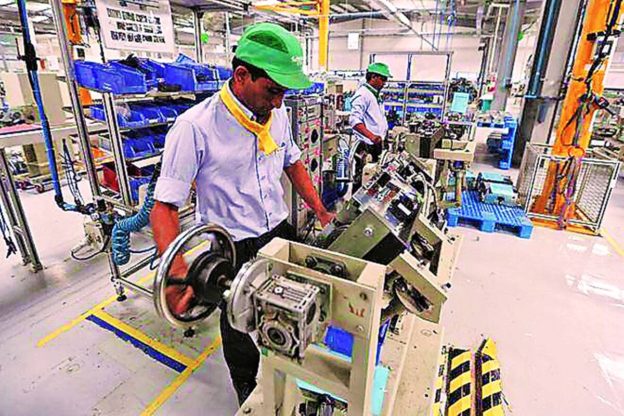India now has an opportunity to adopt a more inclusive and proactive role in leveraging its vast pool of skilled resources, competitive costing, and developed eco-system for select sectors to get ahead in the global supply chain reconfiguration race.
 Increased digitalisation across the board – from the manufacturing sector to commercial and retail – will become the norm rather than an exception.
Increased digitalisation across the board – from the manufacturing sector to commercial and retail – will become the norm rather than an exception.
- By Dr Akshay Bellare
The ongoing pandemic had a tremendous impact across all sectors. To maintain business continuity, we all had to reimagine the way we work and looked towards technology to make sure we survive and thrive in a constantly-evolving environment. Software companies, in particular, have been quick to adapt as well as innovate in order to continue serving customers across diverse verticals. The pandemic also highlighted the need to secure supply chains and put a sharp focus on self-reliance – an Atmanirbhar Bharat.
As we look to the future, we are bullish about India’s long-term prospects of becoming a manufacturing hub. Per a recent CII-EY report, “FDI in India – Now, Next and Beyond, Reforms and Opportunities”, India can expect to attract anywhere between $120 billion to $160 billion in foreign direct investment (FDI) annually by 2025 if we manage to increase the FDI to GDP ratio between 3 per cent to 4 per cent. Encouragingly, around 50 per cent of respondents surveyed for the report saw India among the top three economies or leading manufacturing destinations of the world by 2025. Reports from the ground seem to point in this direction. The telecom sector is already witnessing strong investments with companies moving their manufacturing to India. Things look promising for the auto components and electronics sector as well. Even the pharmaceutical sector will see a boost as companies look at moving API manufacturing into India.
One of the key learnings from COVID-19 is that India has the talent to innovate and solve global challenges. India now has an opportunity to adopt a more inclusive and proactive role in leveraging its vast pool of skilled resources, competitive costing, and developed eco-system for select sectors to get ahead in the global supply chain reconfiguration race, as many companies are looking to diversify their supply chains.
What we are seeing is a shift from “intent” to “implement” – instead of plain-speak we see strong action from the government in making India a favourable manufacturing hub. The Indian government has announced a series of reforms, which is a strong indicator of the commitment to making India a self-reliant country. Some of these include setting up of manufacturing clusters, improving ease of doing business, announcement of Production-linked Incentive (PLI) schemes, financial sector reforms, tax reforms, incentivizing R&D, large infrastructure development projects, power sector reforms, and strengthening the environmental, social, and corporate governance (ESG) in country.
Also read: Fiscal status check: Deficit may soar to 9.5% this FY, hits two-thirds of revised full-year forecast
As the country prepares to move into the next phase of our war against Covid-19, we will witness increased investments in vaccine development, manufacture, and delivery. Here too, India has already shown the way by becoming a manufacturing hub and supply base for COVID-19 vaccines.
Some of the technologies that were developed in 2020 to deal with the pandemic will see large-scale deployment. These include citywide lockdown monitors to aid city administrators – if required, thermal scanning, video analytics-based solutions to enforce social distancing and wearing of face masks, healthy building technologies to encourage the eventual return to the workplace, and UV sanitization for public transport and public spaces to name a few.
Increased digitalisation across the board – from the manufacturing sector to commercial and retail – will become the norm rather than an exception. The countrywide lockdown compelled hundreds of thousands of people to work remotely. Even now, large swathes of employees continue to work remotely. The lockdown and a work-from-home environment gave an impetus to digitalisation and, fortuitously, accelerated Industry 4.0. We foresee this trend to continue, which means that organisations will be focusing on safeguarding their IIoT transformation with industrial cybersecurity solutions. At the same time, there will continue to be an increased reliance on digital tools and applications to monitor, track, and improve asset performance in industrial and commercial establishments and the operations therein.
While there have been challenges in 2020, there were learnings too. The lockdown made everybody realize the importance of a cleaner, greener, safer, and healthier world. The coming years are going to continue seeing rapid changes – both in mind-set and on-ground implementation.
https://www.financialexpress.com/economy/governments-shift-from-intent-to-implement-visible-in-making-india-a-favourable-manufacturing-hub/2216695/







